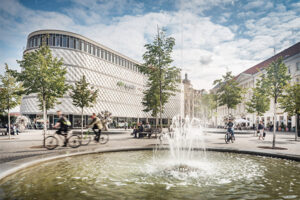NAI Ukraine reports that during the January 2021 lockdown the agreements were similar to the ones in spring. Mall tenants with completely closed stores had to pay for operating costs, as well as marketing in some facilities (5-10 USD/sq m depending on the facility). It was a necessary condition, as the shopping facilities’ owners had to maintain their operations until the complete opening on January 25, 2021.
Tenants who could work under quarantine conditions retained their standard terms and conditions. Thus, the market returned to free of rental payments period for several weeks, so small and medium-sized businesses had no additional discounts. It’s worth noting that retailers did not agree that it was necessary to make part of the payments. However, these were forced measures from some malls, which suffered thumping damages in 2020.
Let us recall that retail turnover for 11 months of 2020 increased by 7.6% compared to 2019, and the always extremely positive dynamics of December should only strengthen the positive plus. At the same time, rental rates fell by 30-50% depending on product categories: cafes, restaurants and entertainment segment operators received the largest discounts as these industries suffered the most. Fashion galleries and other goods also experienced a strong decline: standard lot of 150-200 sq m fell from prime rates of 70-80 $ / sq m up to 50-60 $ / sq. m.
Meeting the challenges of today
The market average ranges from a zero rate with a percentage-of-sales to $ 60, with a level of $ 20-35 for malls with high vacancies and $ 30-50 for already successfully operating facilities with stable visitor numbers. This situation reflects upon high losses of property owners and pose risks to the implementation of obligations, maintenance and development of the existing malls, and the opening of new modern facilities, which are absolutely necessary for market growth, expansion, and meeting new challenges from consumers.
The great leap of online sales this year covers only parts of conventional sales (for example, only 20-30% of the total sales in clothing and footwear categories). The future of retail lies in omnichannel–harmonious and complementary operation of online and offline stores. And malls remain drivers for the development of offline retail, offering the consumer convenient “all in one place”-shopping with entertainment components, communication, and other leisure options. And around the world malls are also online drivers, developing its marketplaces, which is the future for the Ukrainian market. Therefore, developers and retailers will have to find compromise solutions to meet the challenges of today and effective developments in the future.





